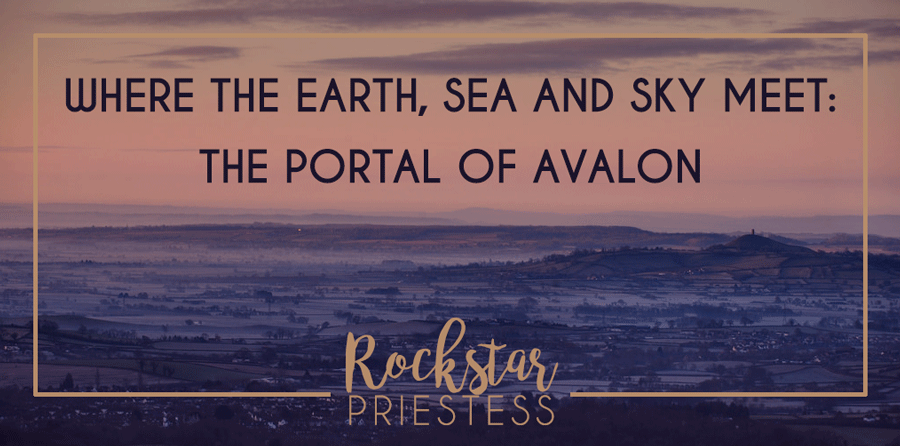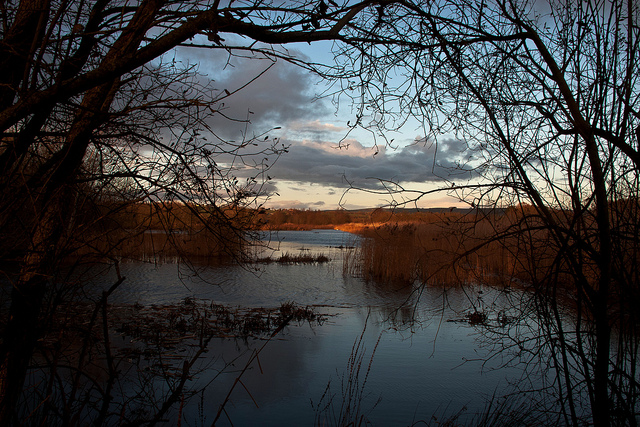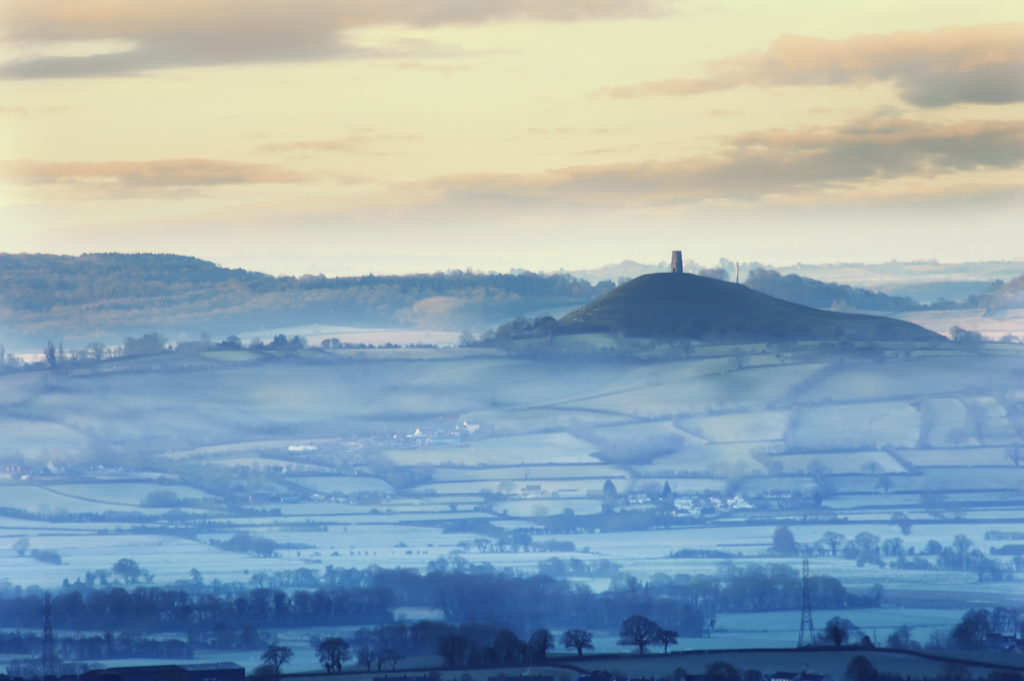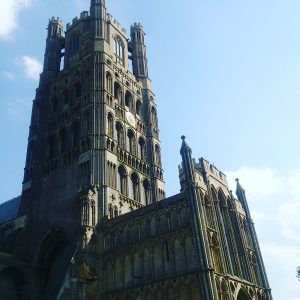 One of the things that really struck me after spending time in Glastonbury, thought by many to be the present-day portal place of the otherworld isle of Avalon, is how similar the landscape is to where I grew up.
One of the things that really struck me after spending time in Glastonbury, thought by many to be the present-day portal place of the otherworld isle of Avalon, is how similar the landscape is to where I grew up.
See, I grew up in a part of England known as the Fens. A few hundred years ago, the Fenlands were a network of vast marshes, lakes and swamps, fringed by tiny raised islands. People would have lived in houses on stilts and make their living trapping eels among the reeds.
The land is now drained, pumped dry for all the fertile arable lands that centuries of swamps create.
Very much like the Somerset Levels. Here, in a nature reserve a few miles out from Glastonbury Town, I got a powerful glimpse of what life would have been like all those centuries ago for the marsh people. Acres of boggy land, bent lichen-blanketed trees, and lakes framed with reeds. A true water landscape..
To the ancient celts, the place where earth, sea, and sky met was sacred.

After decades of dreaming of wild mountains and thick forests, being throughly bored of the flat, dry landscape where I grew up, I finally began to appreciate the sacred nature of my own personal landscape.
Near my childhood home are a number of vast prehistoric earthworks. Now, these ain’t the powerful, stoic stone circles of south England. We are in Fen Country. We dealt in eels and reeds back then.
There is a huge ancient wooden causeway, almost a kilometre long, with a small island at either end of it. It’s called Flag Fen, and it was made out of hundreds of thousands of hand hewn timbers.
This place was thought to be a spiritual centre of great significance, as many precious trinkets have been found on the island and on the causeway.
Some people think it was a place where noble folks were buried, a portal to the other worlds where dead loved ones could be honoured: some evidence suggests it was a bronze age party destination, with evidence of fabulous feasts taking place on the causeway.
(Anyway, it’s probably the same thing: it’s well documented that the celts saw sacred days as an excuse to party and feel alive! There are evidences of huge feasting grounds near Stonehenge too.)
Places where the earth, sea and sky met were sacred to the ancient people of this land. In all celtic mythologies, the otherworld is usually reached across water – underneath a lake, or over a river, or across a sea.
Landscapes such as the Fenlands and such as the old Somerset Levels would have been incredibly sacred to the ancient celts, as it would be a physical place were all three realms met – and the pathways between those worlds would have been open.

I think landlocked islands and dwellings like those in the marshes and lakes of Somerset and Flag Fen would have been even more sacred than the seashore. The seashore is a liminal place of its own, where the sand and the rock meets the sea, but green, fertile places inland would have been even more sacred.
Think of it. The endless, boundless sky above reflected in the soft, glassy pools of the marshes. It would be like looking into a still reflection of the otherworld at every turn.
This is why Avalon is also known as the Glass Isle: the reflection of the island upon the still water of the ancient lake would have been like looking directly into the celtic otherworld.
Other, conquering faiths knew the power of old sites. In Glastonbury, there is a gigantic old ruin of a powerful abbey and monastery complex – built above the otherworld, above the lake of glass, in a place of ancient sacred. Glastonbury Abbey is thirteen-hundred years old, and grew to be the most powerful abbey in the country in the 1500’s.
 At the edges of Fenland lies the 1300 year old Ely Cathedral. Ely would have, once upon a time, been an island at the edge of the fens, much like Avalon, rising out of lakes and marshes. However, instead of having a weird shaped hill that is seen from afar, the Christians built a gigantic cathedral on the island, which dominates the landscape for miles around. On a clear day, you can see it from almost 20 miles away!
At the edges of Fenland lies the 1300 year old Ely Cathedral. Ely would have, once upon a time, been an island at the edge of the fens, much like Avalon, rising out of lakes and marshes. However, instead of having a weird shaped hill that is seen from afar, the Christians built a gigantic cathedral on the island, which dominates the landscape for miles around. On a clear day, you can see it from almost 20 miles away!
(Insert dirty jokes about thrusting huge phallic monuments into ancient sacred places here.)
It’s fascinating to remember that one of the most sacred aspects of the Isle of Avalon, and indeed many ancient celtic Holy Isles is how they are a place where the portals to the other world are open wide because of the celtic trinity of Earth, Sea and Sky.
It feels so wonderful to finally have appreciation for the ancient sacred landscape I grew up in. Sometimes its’ hard to value your home turf, because as time goes by you get used to it and take it for granted. It’s so mundane, you can’t see any magic in it. But knowing the sacred history of the land I grew up in has been a real game changer for me. I look at the land around me, and where before I saw boring fields and endless ditches, I see vast, transcendent skies and remembrances of the sacred waterways of times gone by.
One of the most beautiful things about the fens is the endless panorama of the sky. We have so much sky, and no pesky mountains or hills to intrude upon the theatre of the clouds and the sunset. I can only imagine what that vast sky would have looked like reflected upon the marshes of old, where it would have been as if the sky, the earth and the water had all melted into one another, being unsure where land ended and sea or sky began.
What is the sacred history about where you grew up?
P.S. By the way, the best thing about Ely? It’s called Ely because it’s literally the Isle of Eels. The fenlanders lived and breathed eels back in the day. They ate and traded the finest, slipperiest eels Britain had to offer. Back when they were building an early incarnation of the cathedral 1100AD they bought the stone from a neighbouring quarry for a sum of 8000 eels a year. Present day Ely even has an Eel festival, and there is a fancy dress competition where all the kids dress up as eels and the best eel costume gets a prize.
P.P.S. It is my dream to dress up as a mermaid and sings songs about eels at the Ely Eel Festival.
P.P.P.S. There is a town called Ely in Nevada, USA, but since it’s in a desert country I don’t think they have any eels there. Posers!


Hello Demi, thank you for this post and the pictures! I dream of visiting those ancient sites in my lifetime! I was born and raised in New Orleans, LA, which is a very mystical and magickal place. But like you, I didn’t appreciate it until I left to move to California. I didn’t realize what was right under my nose!
Sending some positive energy your way!